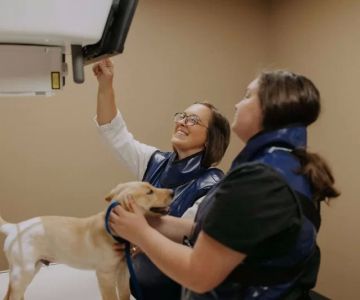What Does a Veterinarian Make? Exploring Salary, Income, and Career Opportunities
- 1. Understanding Veterinarian Salary
- 2. Factors Affecting Veterinarian Income
- 3. Career Paths and Growth in Veterinary Medicine
- 4. Real-World Examples of Veterinarian Salaries
- 5. Taking the Next Step: How to Become a Veterinarian
1. Understanding Veterinarian Salary
Veterinarians are essential professionals who dedicate their careers to the health and wellbeing of animals. But what does a veterinarian make? In the United States, the average salary for a veterinarian varies based on experience, specialization, and location. According to the Bureau of Labor Statistics, as of the latest data, the median annual wage for veterinarians is approximately $100,000. However, this figure can range widely, from around $60,000 to over $160,000 annually.
Veterinarians working in private practice tend to earn more than those employed in government or nonprofit sectors, although salaries can vary significantly depending on the type of practice and the region they work in.
2. Factors Affecting Veterinarian Income
The income of a veterinarian is influenced by several factors. One of the most significant is the area of specialization. Veterinarians who focus on specialized fields such as surgery, dermatology, or cardiology typically earn higher salaries due to the advanced skills required. Additionally, veterinarians in urban areas or areas with higher costs of living tend to earn more than those working in rural regions.
Another factor is experience. Newly graduated veterinarians generally start at a lower salary compared to their seasoned counterparts. As with most careers, experience plays a key role in salary growth within the veterinary field.
3. Career Paths and Growth in Veterinary Medicine
Becoming a veterinarian opens up a wide array of career opportunities. While many veterinarians work in private practice, others may choose to work in research, education, or animal shelters. Some may pursue roles in corporate veterinary medicine or government agencies such as the Centers for Disease Control and Prevention (CDC).
Veterinarians may also choose to become veterinary specialists, which involves completing additional years of education and training after earning a Doctor of Veterinary Medicine (DVM) degree. Specialists often enjoy higher salaries and more focused career paths.
4. Real-World Examples of Veterinarian Salaries
To better understand what veterinarians make in the real world, let’s look at a few examples. Dr. Jane Smith, a small animal veterinarian in a metropolitan area, reports an annual income of around $120,000. Meanwhile, Dr. John Doe, a veterinary surgeon in a specialized practice, earns closer to $180,000 per year due to his advanced skills and the complexity of his cases.
On the other hand, veterinarians working in rural areas or less specialized fields may earn around $70,000 annually. These figures show the importance of location, specialization, and experience in determining a veterinarian’s salary.
5. Taking the Next Step: How to Become a Veterinarian
If you are interested in pursuing a career as a veterinarian, the first step is to earn a Bachelor’s degree, followed by a Doctor of Veterinary Medicine (DVM) degree from an accredited veterinary school. Afterward, you’ll need to pass the North American Veterinary Licensing Exam (NAVLE) to become licensed to practice in your state.
Being a veterinarian requires not only technical expertise but also compassion and a commitment to lifelong learning. If you’re ready to take the next step, consider exploring veterinary schools and connecting with professionals in the field to gain a better understanding of the opportunities and challenges this rewarding career path offers.









